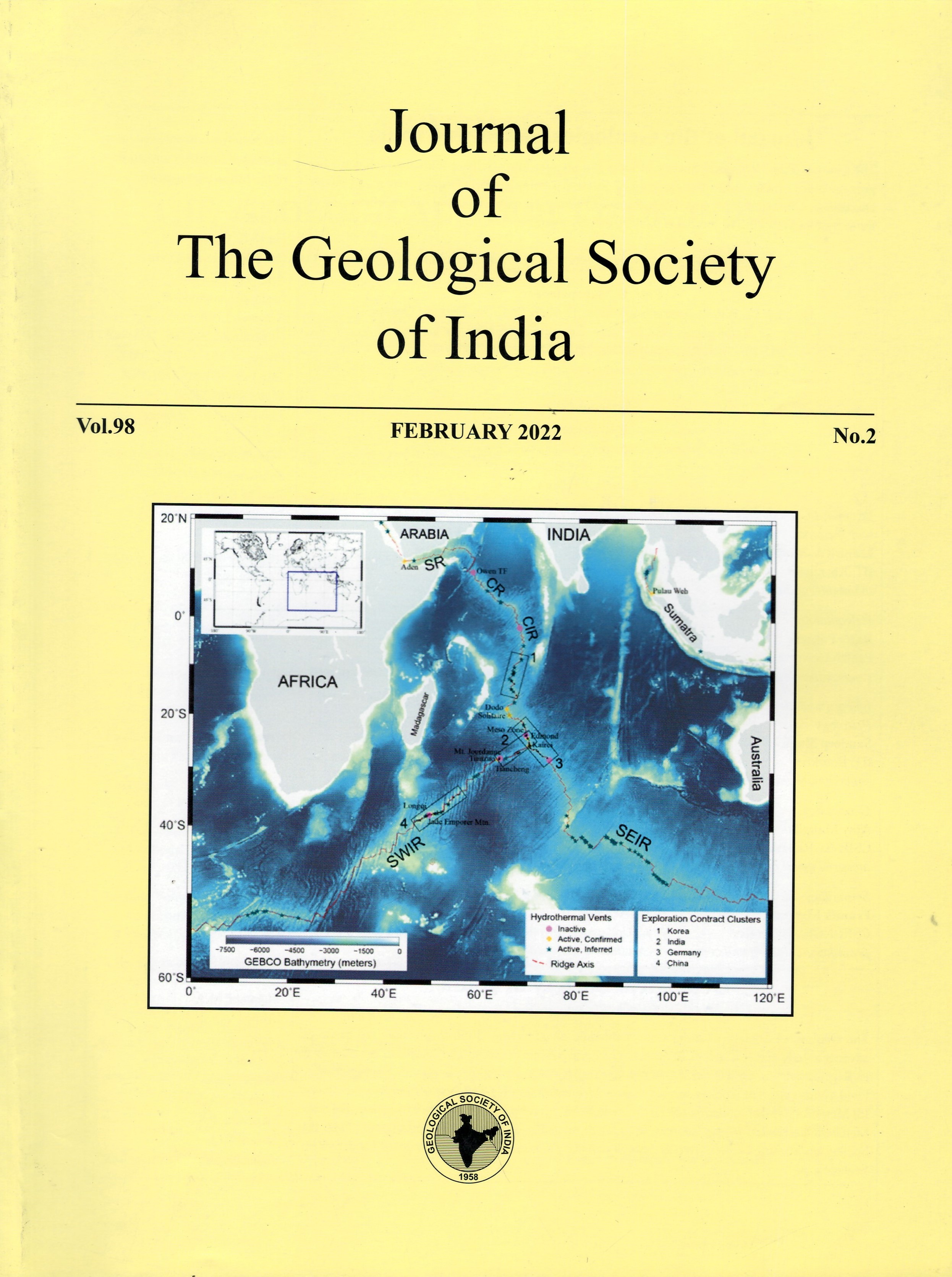Earthquake Swarm and Quiescence Precursory to the NE Himalaya 2011 Sikkim Earthquake (M 6.9)
DOI:
https://doi.org/10.1007/s12594-022-1955-8Keywords:
No KeywordsAbstract
The September 18, 2011 earthquake of M 6.9 has been critically examined and found to be associated with episodes of precursory swarms, quiescence, mainshock and aftershocks. This earthquake was clearly preceded by precursory swarm activity for almost one year followed by quiescence for one year. The precursory swarm and quiescence period consists of four earthquake swarms and one foreshock event of magnitude (mb ³ 4.5) in the epicenter preparatory zone of the 2011 Sikkim earthquake. The 2011 Sikkim earthquake recorded about five aftershocks of magnitude (mb) ³ 4.5 between 2011 and 2014 for the same region. This study shows that the 2011 Sikkim earthquake followed the same sequence of activities as observed for other major earthquakes in the northeast Himalaya.
Downloads
Metrics
Issue
Section
Published
How to Cite
References
Arora, B.R., Prajapati, S.K. and Reddy, C.D. (2014) Geophysical Constraints on the Seismotectonics of the Sikkim Himalaya. Bull. Seismol. Soc. Amer., v.104, pp.2278–2287. doi:10.1785/0120130254.
Dasgupta, S., Mukhopadhyay, B. (2019) Revisiting two Damaging Indian Earthquakes of 1885: Kashmir and Bengal. Jour. Geol. Soc. India, v.93, pp.263–268 (2019). doi:10.1007/s12594-019-1172-2
Evison, F.F. (1977) Fluctuations of seismicity before major earthquakes. Nature (London), v.226, pp.710-712. doi:10.1038/266710a0.
Evison, F.F. (1982) Generalised Precursory Swarm Hypothesis. Jour. Phys.
Earth, v.30, pp.155-170. doi:10.4294/jpe1952.30.155.
Gupta, H.K., Singh, H.N. (1986) Seismicity of the northeast India region, part II: earthquake swarms precursory to moderate magnitude to great earthquakes. Jour. Geol. Soc India, v.28, pp.367–406.
Gupta, H.K., Sabnis, K.A., Duarah, R. et al. (2020) Himalayan Earthquakes and Developing an Earthquake Resilient Society. Jour. Geol Soc India, v.96, pp.433–446. doi:10.1007/s12594-020-1581-2.
Gupta, H. K. (1985) Cachar earthquake of Dec. 31, 1984, Is it a signal for the beginning of seismic activity? Jour. Geol. Soc. India, v.26, pp.145-147.
Gupta, H.K. (2015) The Mw 7.8 April 25, 2015 Nepal earthquake (End of a long-term seismic quiescence?). Jour. Geol. Soc India, v.85, pp.641–646.
Khan, M.M., Kalyan Kumar, G. (2018) Statistical Completeness Analysis of Seismic Data. Jour. Geol. Soc. India, v.91, pp.749–753. doi:10.1007/ s12594-018-0934-6.
Khattri, K. and Wyss, M. (1978) Precursory variation in the seismicity rate in the Assam area, India. Geology, v.6, pp.685-688. doi:10.1130/0091-7613
Kumar, A., Sanoujam, M., Someshwar Roy, L. et al. (2016) Mw 6.7 earthquake of Manipur, NE India: Some Insights. Jour. Geol. Soc. India, v.88, pp.5–12. doi:10.1007/s12594-016-0452-3.
Mohapatra, A.K., Mohanty, W.K. and Verma, A.K. (2014)Estimation of maximum magnitude (M max): Impending large earthquakes in northeast region, India. Jour. Geol. Soc. India, v.83, pp.635–640. doi:10.1007/s12594-014-0092-4.
Roy, P.N.S., Mondal, S.K. (2012) Identification of active seismicity by fractal analysis for understanding the recent geodynamics of Central Himalaya. J. Geol. Soc. India, v.79, pp.353–360. doi:10.1007/s12594-012-0056-5.
Sengupta, P., Nath, S.K., Thingbaijam, K.K.S. et al. (2011) Fractal analysis of major faults in India on a regional scale. Jour. Geol. Soc. India, v.78, pp.226. doi10.1007/s12594-011-0086-4.
Srivastava, H.N., Bansal, B.K. and Verma, M. (2013) Largest earthquake in Himalaya: An appraisal. Jour. Geol. Soc. India, v.82, pp.15–22. doi: 10.1007/s12594-013-0117-4.
Uyeda, S., Nagao, T., Kamogawa, M. (2011) Earthquake precursors and prediction. In: Gupta, Harsh K. (Ed.), Encyclopedia of Solid Earth Geophysics, v.1, pp.168–177.
Verma, M., Bansal, B.K. (2013) Active fault mapping: An initiative towards seismic hazard assessment in India. Jour. Geol. Soc. India, v.82, pp.103– 106. doi:10.1007/s12594-013-0128-1.

 Mahesh Prasad Parija
Mahesh Prasad Parija






